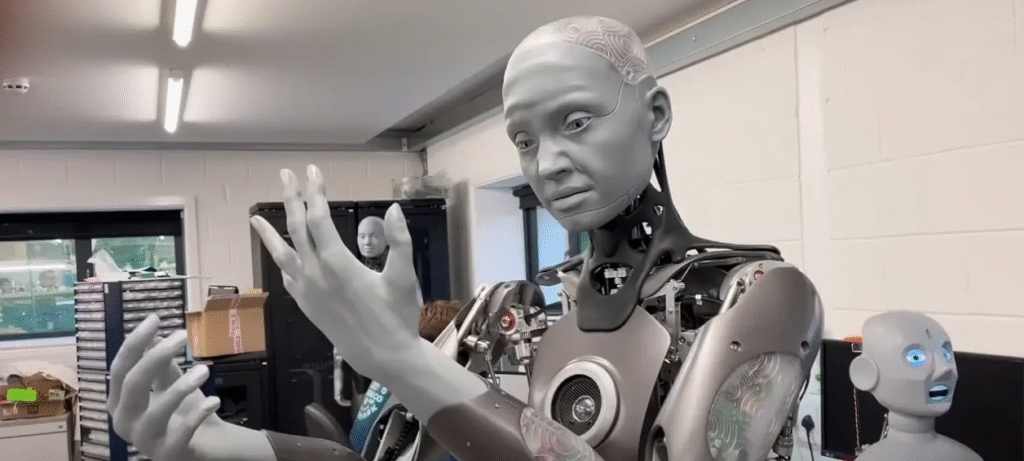The world is on the verge of a technological revolution as Agility Robotics, one of the leading robotics companies, predicts that humanoid robots will coexist with humans within the next 25 years. The company envisions a future where robots seamlessly integrate into society, sharing workplaces, public spaces, and even homes with people.
Future of Robotics From Factories to Everyday Life
Agility Robotics executives, the evolution of AI-powered humanoid robots will transform not only manufacturing but also healthcare, logistics, and service industries. The company, best known for its bipedal robot “Digit”, believes that advances in artificial intelligence, computer vision, and material science are accelerating the path toward fully autonomous, human-like machines.

Agility Robotics stated that robots will not merely perform repetitive tasks but will collaborate intelligently with humans, understanding context, language, and social behavior. The company predicts that by 2050, humanoid robots could become commonplace in households, assisting the elderly, performing domestic chores, and supporting workplaces.
AI and Human Collaboration New Industrial Revolution
This vision marks what experts call the fourth industrial revolution, where humans and robots work together rather than compete.
Modern humanoid robots, equipped with machine learning and adaptive movement systems, can already navigate complex environments, handle delicate objects, and respond to verbal commands.
As AI becomes more advanced, robots could learn from experience, adapting their behavior in real time just as humans do.
Economic and Social Implications of a Robot-Human Society
The integration of humanoid robots into daily life could have massive implications for global labor markets. Analysts suggest that robotic assistance will reduce human exposure to hazardous jobs and increase productivity across industries.
However, there are growing concerns about job displacement, ethical use of AI, and the regulation of autonomous machines.
According to futurist Dr. Maria Jensen, The transition will be challenging, but if managed well, it could lead to a more balanced, human-centered economy where robots handle the physical and humans focus on creativity and innovation.
Technological Progress Behind Agility’s Vision
Agility Robotics’ flagship robot, Digit, already demonstrates how far robotics technology has come. Standing about 5 feet tall and capable of walking, carrying packages, and navigating stairs, Digit has been tested for warehouse logistics and delivery services.
The company’s engineers are focusing on developing emotional recognition systems and adaptive AI to allow future robots to respond to human moods, body language, and tone of voice.
This human-robot empathy is seen as crucial to ensuring safe coexistence and cooperation in shared environments.

Agility Robotics also collaborates with AI developers and hardware companies to build robots with sustainable energy consumption, making them efficient for large-scale deployment.
Challenges on the Path to Human-Robot Coexistence
Despite optimism, significant hurdles remain before humanoid robots become everyday companions.
These include high production costs, battery limitations, software safety, and ethical dilemmas about autonomy and accountability.
Governments and research institutions are also working to draft global AI and robotics regulations to ensure that as technology advances, it does so within moral and safety boundaries.
As Agility Robotics puts it, The question is not whether humanoid robots will live among us but how we will choose to coexist with them responsibly.


 AI Shopping Queries Nearly Double Amid Consumer Demand
AI Shopping Queries Nearly Double Amid Consumer Demand  Pakistan and Saudi Arabia Strengthen Cooperation in AI
Pakistan and Saudi Arabia Strengthen Cooperation in AI  Smartest Zodiac Signs: How Each Ranks in Intelligence
Smartest Zodiac Signs: How Each Ranks in Intelligence  AI-Robots Prepare for First World Humanoid Robot Games
AI-Robots Prepare for First World Humanoid Robot Games  Can OpenAI’s ChatGPT-Powered Browser Challenge Google?
Can OpenAI’s ChatGPT-Powered Browser Challenge Google?  Grok Banned in Turkey Over Insults to President Erdogan
Grok Banned in Turkey Over Insults to President Erdogan